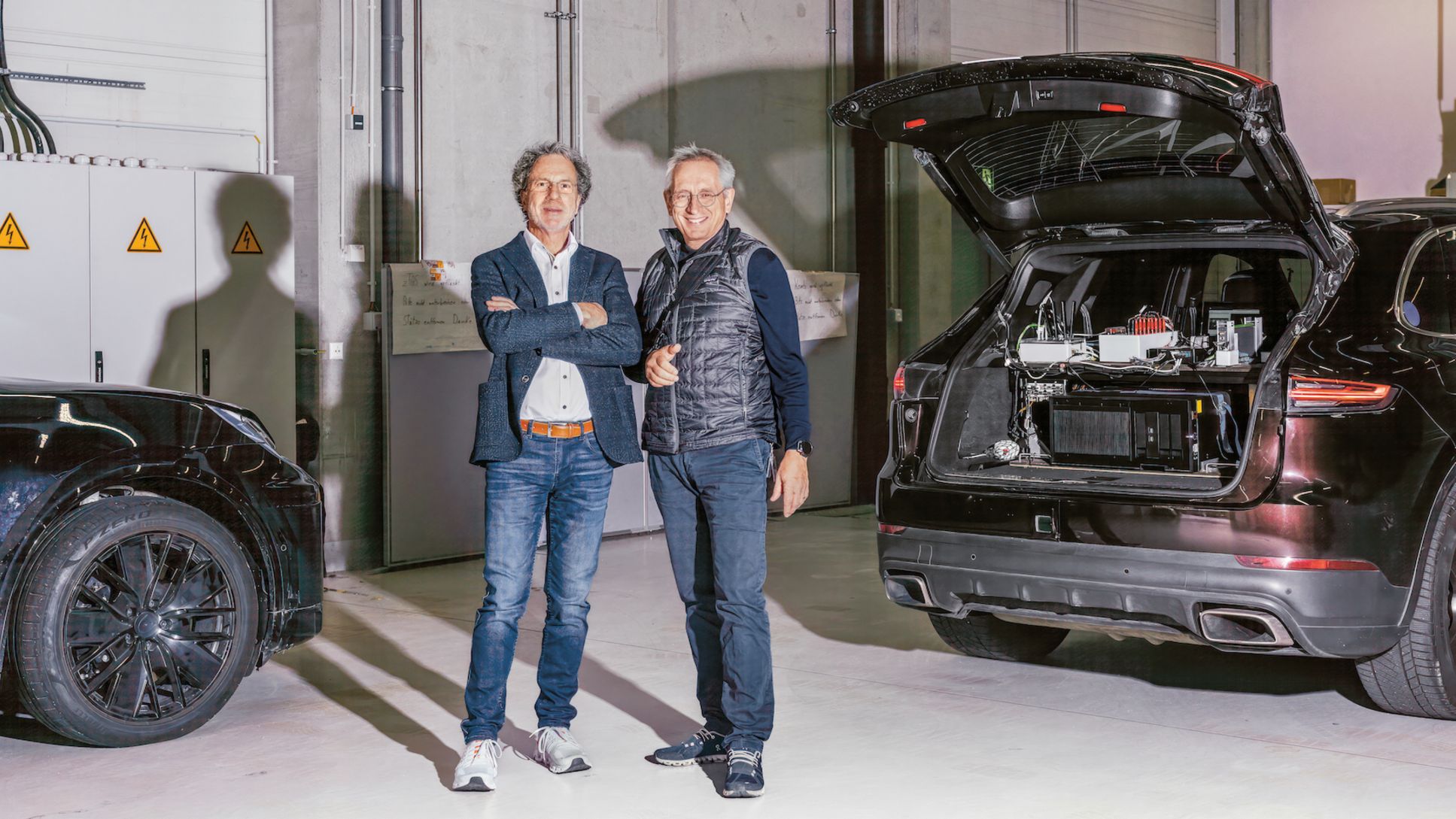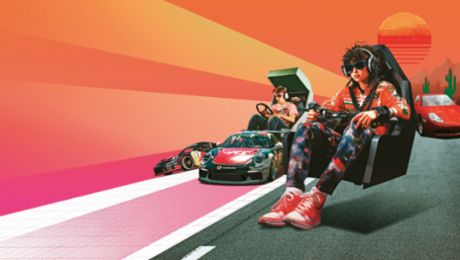What role will driver assistance systems and highly automated driving play in the future—particularly for Porsche customers?
Jürgen Bortolazzi: When it comes to driver assistance systems, Porsche customers expect the highest level of support, convenience, and safety. We can and must offer state-of-the-art technological solutions—including ones in the field of automated driving. But the underlying premise will continue to apply: A Porsche will always first and foremost be a car for people who want to drive themselves.
Albrecht Böttiger: We are, however, increasingly finding that Porsche customers want to have support in special situations—for example in traffic jams and when searching for a parking space. Take the situation in big cities like Shanghai, Beijing or Los Angeles, for example. You can’t drive a Porsche in a dynamic manner there like you can on a picturesque country road in the Black Forest. Rather than concentrating on stop-and-go traffic, anyone would presumably like to use that time profitably, for example doing other activities that are not allowed and are not possible when actively driving.
You just referred to legal requirements. Are they harmonized globally or are there major differences?
Bortolazzi: We see very large differences in this area. There are worldwide regulations such as the UN’s ECE regulations for the technical requirements for vehicles that many countries use for orientation. But we also have to deal with a lot of country-specific circumstances. China in particular is increasingly emancipating itself and introducing its own approval and legal regulations to the market.
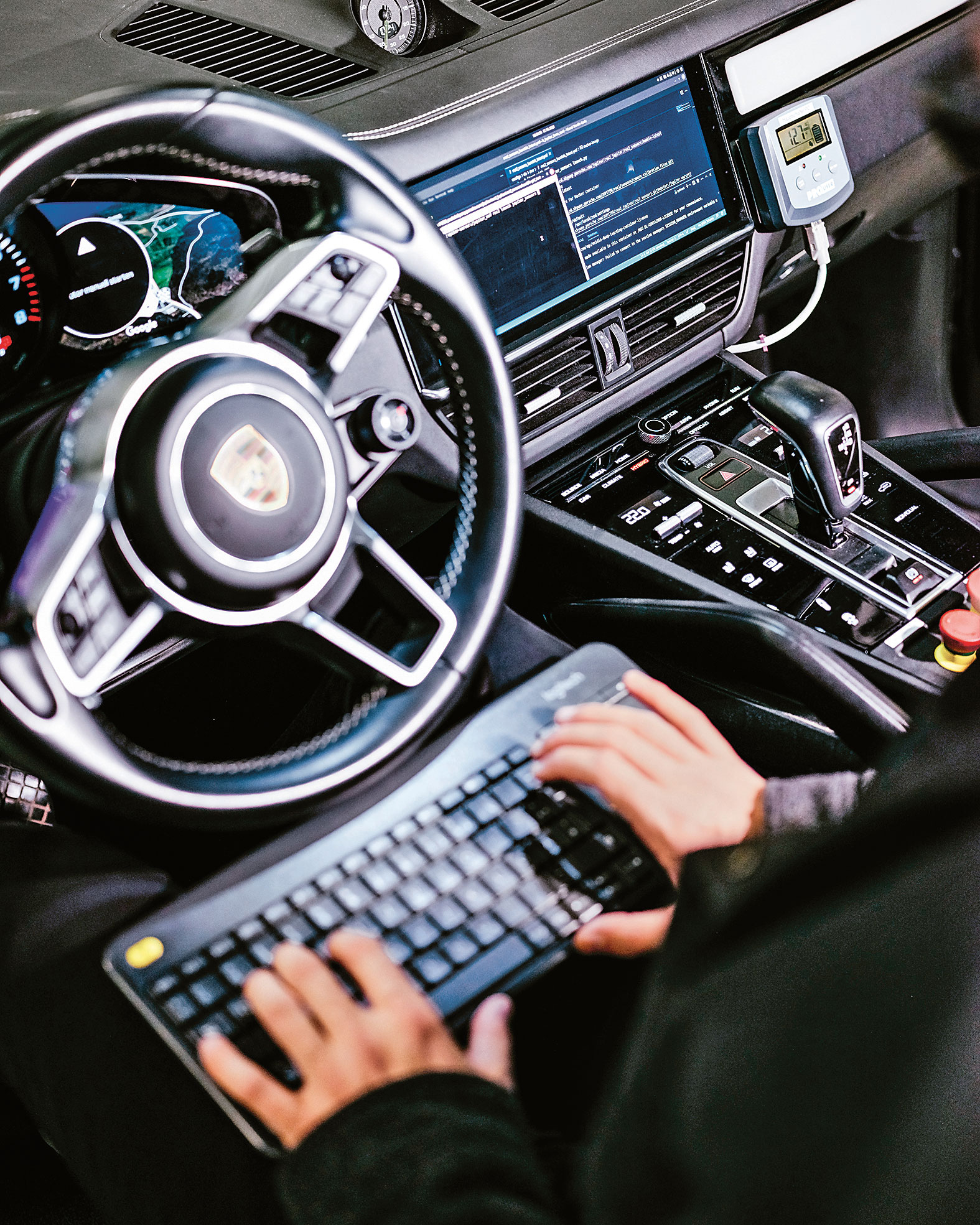
At what level of automated driving are we right now?
Bortolazzi: We’re at level 2, so still assisted driving. At this point, drivers continue to assume full responsibility. We’re currently working hard on an enhancement of level 2, which is being widely referred to as level 2+. In the future, drivers will be able to take their hands off the steering wheel. At the same, the vehicle has to monitor that drivers remain ready to take control at all times. In other words, we have to monitor that they have their eyes on the road, that they are still observing the traffic situation, and that they can resume control at any time.
Some OEMs are currently at the threshold of advancing from level 2 to level 3 of automated driving. How big is the leap from level 2 to level 3?
Bortolazzi: It’s more of a major leap, because a redundancy path has to be implemented in the vehicle. It assumes control - at least for a certain time - of the driving function when the main system reaches its limits or a problem occurs. There’s a significant effort involved in that, including in adjacent systems such as the brakes, steering, and power supply.
Böttiger: We moved from level 1 to level 2 rather quickly, for example from simple longitudinal control to combined longitudinal and lateral control. The leap to level 3, however, is taking more time - despite the massive acceleration of the development processes through data-driven development. That is primarily due to the requisite fallback level, which in addition to the material costs in the vehicles also involves a major effort in terms of implementation in development.
Bortolazzi: At level 4, this fallback level will be even more pronounced, so that the vehicle can be operated in redundancy mode over a longer period of time. This is accompanied by additional redundancy - for example in the powertrain system, enabling the vehicle to exit the freeway of its own accord, if needed.
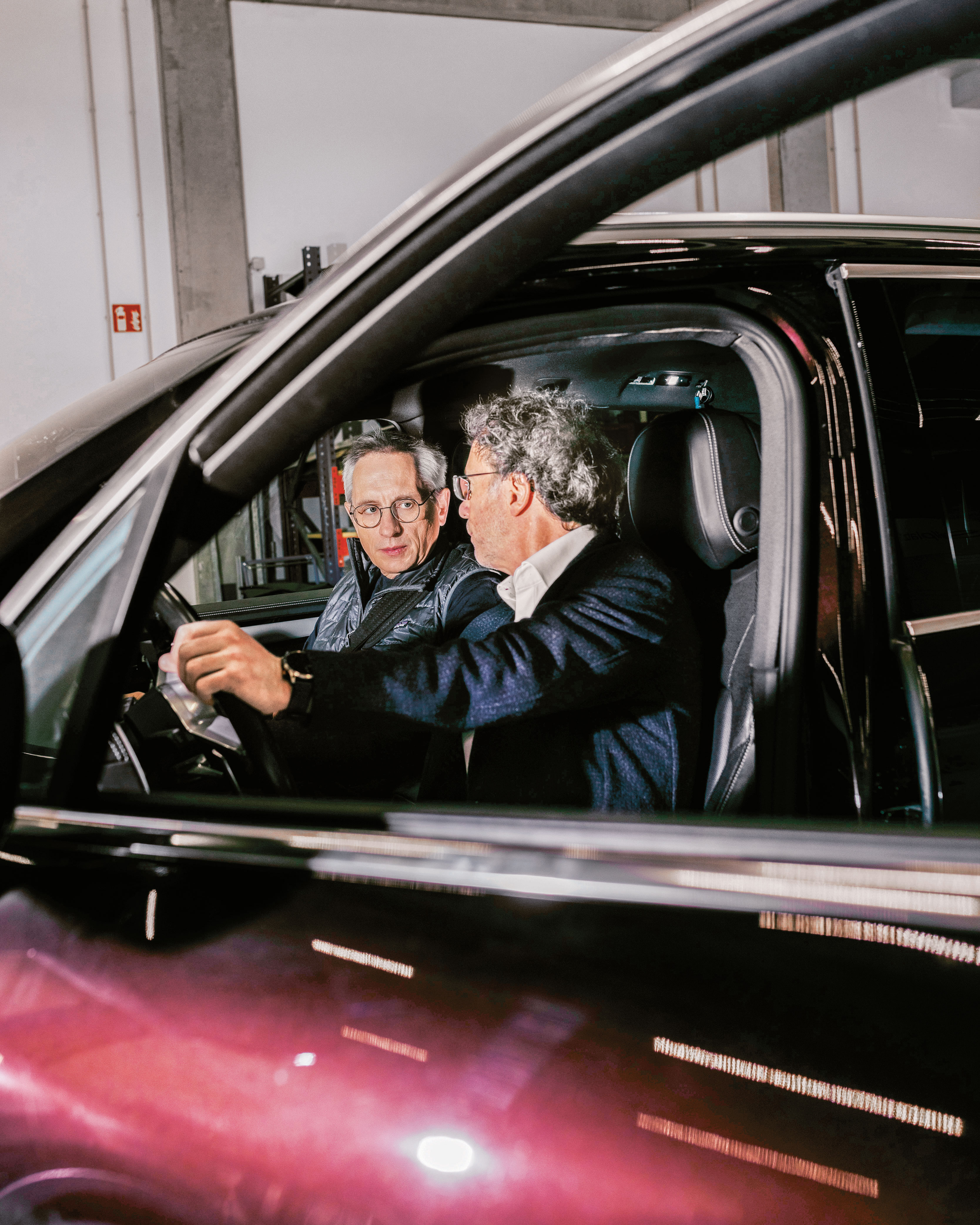
In the US, there are already robotaxis without drivers. Are the manufacturers there ahead of the European OEMs with regard to autonomous driving?
Böttiger: In this case, we have to differentiate between the use cases. Robotaxis have a limited scope of action or operational design domain within cities and the vehicles belong to service providers or fleet operators - much like driverless buses today. For vehicles that belong to individual customers and are operated by them personally, the focus is placed on the development of supported driving on the freeway or in traffic jams, and not on driverless driving. It’s primarily a question of greater distances. This is why there are differences in orientation here. So we can’t draw the conclusion that the US manufacturers are further advanced because they no longer require a driver.
How do things look for the Chinese manufacturers?
Bortolazzi: Our observations suggest that the Chinese manufacturers are approaching the topic of automation very ambitiously. That is certainly facilitated by the fact that it is funded and incentivized by the state. This year, for example, we expect legislation approving level 3. The way this is manifested is also somewhat different there: Chinese manufacturers have a lot of technology on board, with control units with very high processing power in addition to the sensor technology. But it still remains to be seen if that will lead to vehicle functions that are actually practical.
What technologies are you focusing on in the development of highly automated driving functions?
Bortolazzi: For safety reasons, our current level-3 and level-4 concepts include three self-contained physical sensing principles: radar, lidar and cameras. These are proven technologies, but still have potential for further improvement, for example through imaging radars. These are high-resolution radars that, like lidar, create a three-dimensional image of the environment.
Böttiger: Porsche Engineering has in-depth expertise in all three sensor types, including the expertise gained through its international locations. But we also have the capabilities necessary for development up to level 4 in the area of control unit platforms, including, for example, graphics resources and accelerators for neural networks. The use of AI is increasingly indispensable, particularly in the field of environment perception and data-driven development - we have made this our consistent focus with our own in-house international AI competence center. And when it comes to the requisite processes, methods and tools, we are currently working on being able to map them from software development through to validation and approval. This is a topic that we are really delving into and which we view as essential for approval for customers.
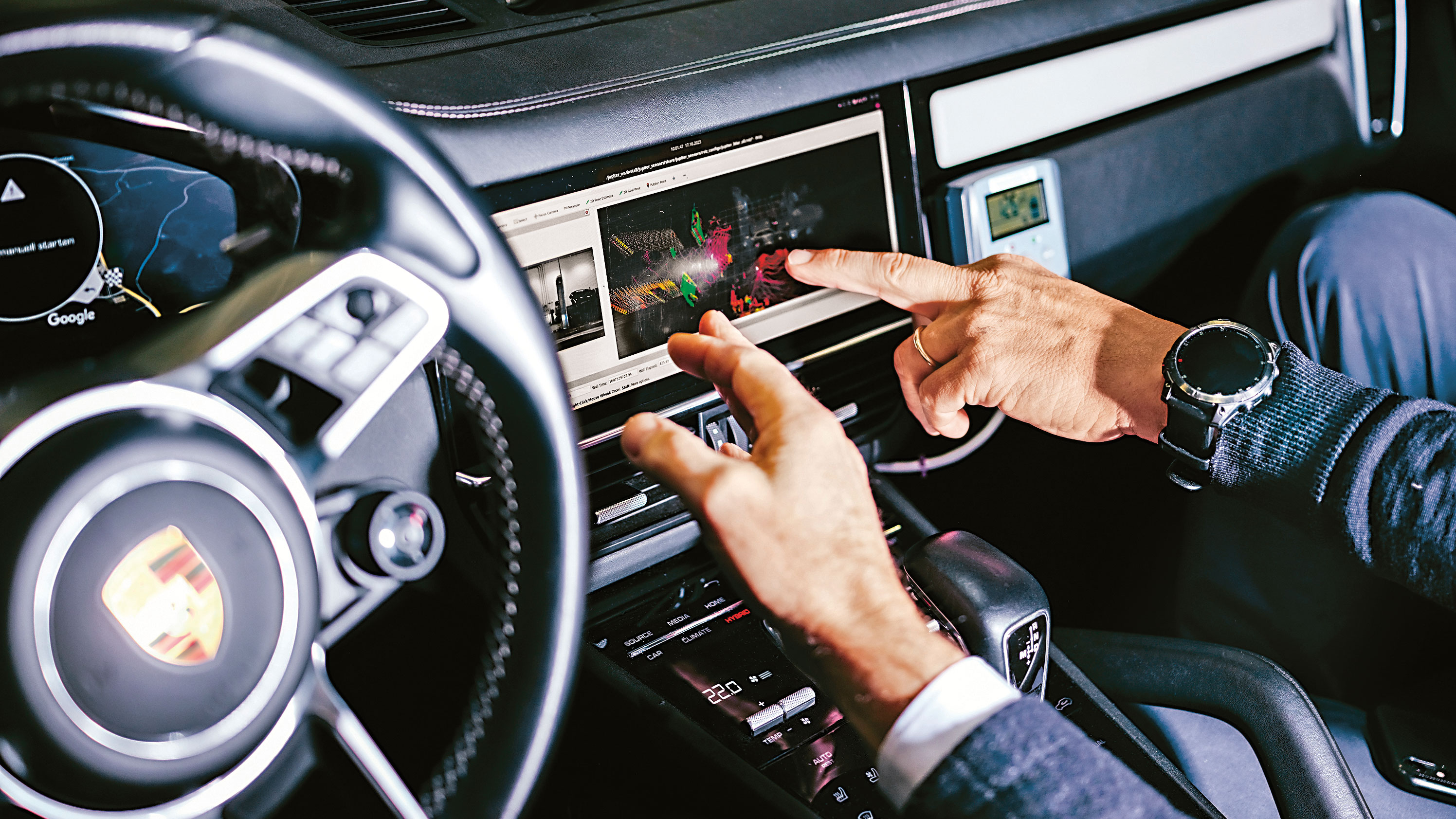
What is the unique selling point of Porsche Engineering with regard to the development process?
Böttiger: Along with hardware and real vehicles, we are able to, in particular, utilize the virtual tools along the entire V model for the end-to-end development of ADAS functions. They allow us, for example, to simulate and test the emerging functions, even before ECUs exist as hardware. Another of our strengths is our worldwide locations, which allow us to operate hardware-in-the-loop test benches and thus continue the test operation, as well as development, around the clock. Errors that were discovered in Shanghai, for example, are immediately factored into an update that is then tested in Europe. Thanks to this international presence, we are also in a position to support real test drives in the markets. This means we can carry out the application and validation required locally on the market with physical test systems in the respective location.
How will vehicles change generally if driving is increasingly performed by technology?
Bortolazzi: Automated driving requires higher IT performance in the vehicle. We need high-performance computers on board that process sensor data and then take on the planning and implementation of the route. There will also be broadband communication between the vehicle and the digital infrastructure, in which, for example, electronic maps and swarm data are stored, i.e. movement profiles and traffic information, as well as warnings about accidents. There will also be vehicle-to-X communication as soon as the relevant standards have been established.
Böttiger: The numerous components that have to be integrated are particularly important in this regard. The installation space must be created; as a rule, integration must occur without affecting the visible exterior of the vehicle. However, certain components may also be deliberately highlighted as a feature - this is an approach that we often see in other markets such as China: There, lidars are sometimes not concealed, and instead deliberately highlighted.
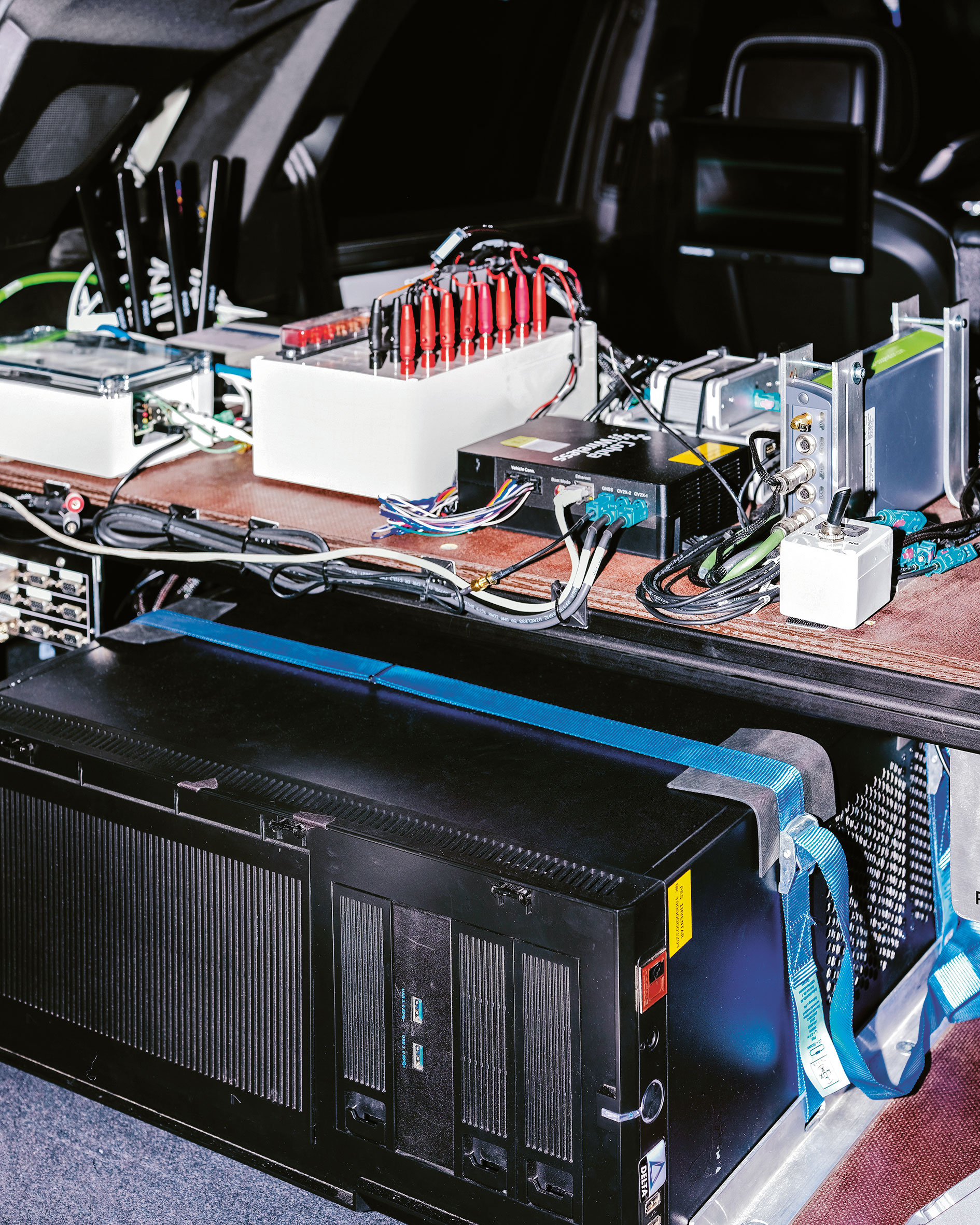
Speaking of which: How can the new vehicle functions be combined with the styling?
Bortolazzi: We want to make technology visible - but in a way that makes it look really intentional. Porsche’s design philosophy is very clean with clear lines and uninterrupted geometries. On the other hand, the optical sensors must always have a certain angle of view. Integrating that cleanly is definitely a major challenge. Therefore, we work intensively with our design and technology specialists in body development.
What does highly automated driving mean for the interior?
Bortolazzi: Our vision is to provide our customers with an adequate experience in the interior in automated driving mode. Depending on whether the driver wants to concentrate on office work, communication or entertainment, the surfaces of the vehicle are made usable through displays or projections, for example. However, the safety aspect is always important: We have to ensure occupant protection in any event, because accidents, for example due to errors made by other road users, cannot be entirely ruled out in automated driving scenarios. Passengers also have to be protected in relaxed positions. We need intelligent airbag and new restraint systems that are integrated into the seats. In addition, there is high-precision interior and occupant monitoring so that the vehicle can recognize exactly what position the driver or passengers are in and what the optimal deployment strategy for these restraint systems would be.
The development of driver assistance systems and automated driving functions is highly complex. Does Porsche cooperate with other companies in this area?
Bortolazzi: Porsche Engineering is an important partner, as the company has built up a number of fundamental capabilities over many years. This applies, for instance, to data-driven development, but also to the topic of simulation. That said, I would also like to mention the software development skills that we continue to build and expand together. There are also the nearshore and international locations of Porsche Engineering, which are very important to us because we have to test and validate new systems in many different regions due to the different approval conditions. Porsche Engineering offers us excellent support in all these areas.
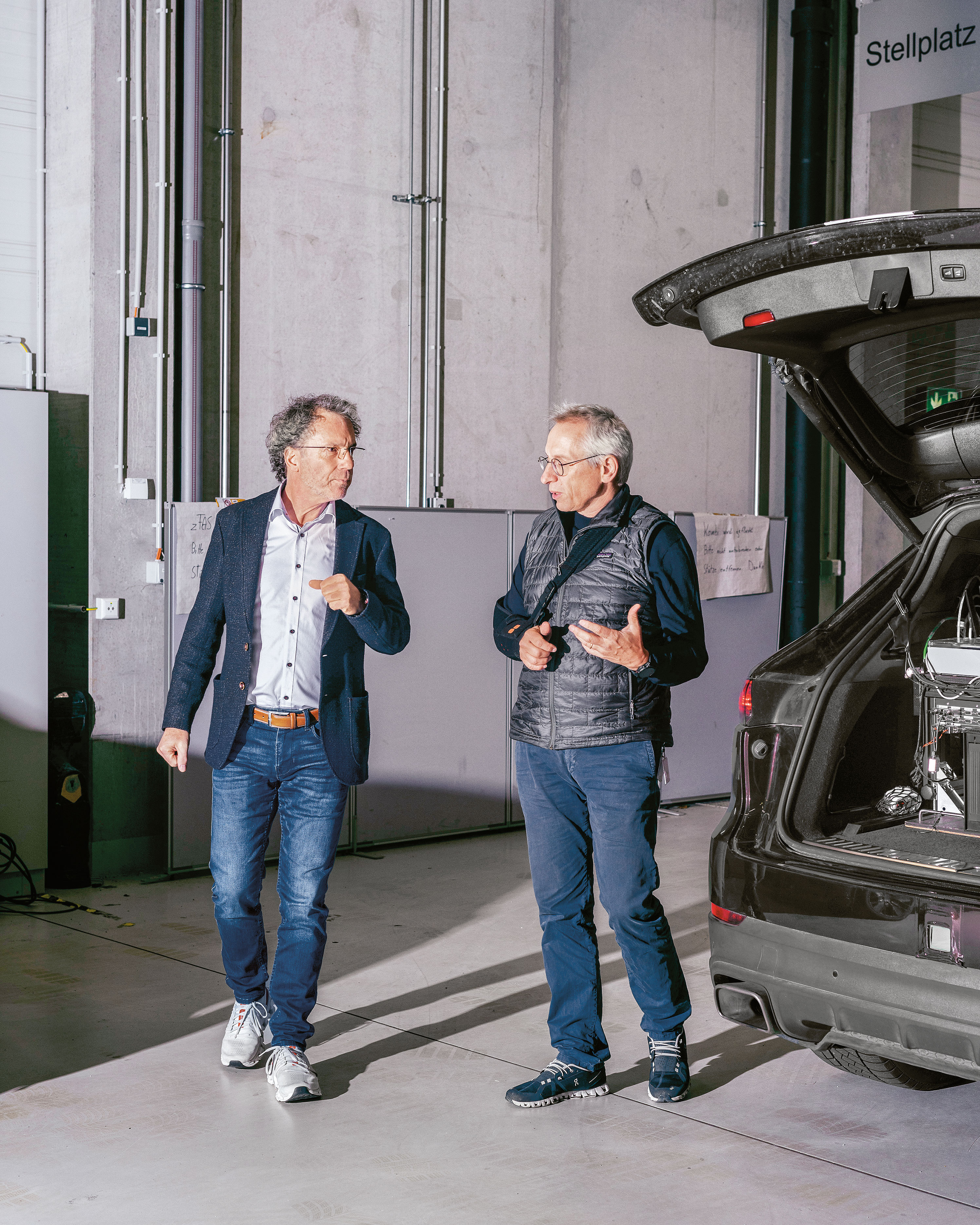
Another partner is Mobileye. Why did you choose to work with this company in particular?
Bortolazzi: Mobileye is currently one of the technology leaders. The company has done more than ten years of intensive development work in the field of driver assistance systems and automated driving. In addition to a function stack, Mobileye also offers a system-on-chip solution - already in its sixth generation - that incorporates a great deal of experience. There is also a complete digital ecosystem with a cloud-based map and efficient coupling of the vehicle with the map.
What milestones have been achieved as part of this cooperation?
Bortolazzi: We have had cameras in Porsche vehicles based on Mobileye technology for several years. Now the new ECU platform is being added. It offers a high-performance interface to the electronic map and a highly advanced sensor system - in particular the camera belt, which provides 360-degree monitoring.
One last question: Do you prefer to drive yourself or to be driven? And what are you most looking forward to when the car takes over for you?
Böttiger: When I’m on the Stelvio Pass road in a 911 convertible, I don’t have any need for level 3. Then I want to drive myself. Likewise in the Black Forest. But whenever I’m in the city, I already switch on the combined longitudinal-transverse assistant, which offers me a lot of relaxation and convenience. If I didn’t have to drive myself at all, I would surf the internet or do business things. Or watch sports and other videos.
Bortolazzi: I would prefer to use automated driving for the journey to the office - for example, to make use of my 50 kilometer commute in the morning while in traffic jams or in stop-and-go traffic on the freeway.
Info
Text first published in the Porsche Engineering Magazine, issue 1/2024.
Text: Christian Buck
Photos: Nói Crew
Copyright: All images, videos and audio files published in this article are subject to copyright. Reproduction in whole or in part is not permitted without the written consent of Dr. Ing. h.c. F. Porsche AG. Please contact newsroom@porsche.com for further information.
